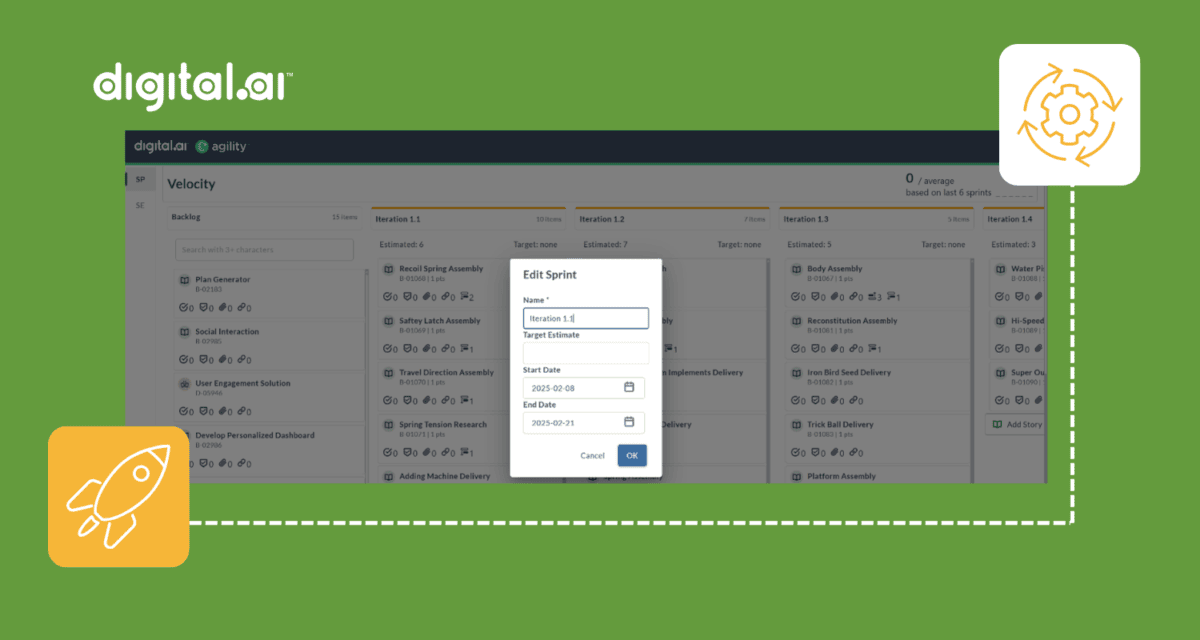Table of Contents
Related Blogs
The U.S. federal government has come a long way in terms of tech advancement and modernization since the early 2000s, see how far in this post.
Public perception of government is often that it is slow-moving, reluctant to innovate, and gets in its own way when it comes to modernization efforts. In truth, the U.S. federal government has come a long way in terms of tech advancement and modernization since the early 2000s. As an example: In 2010 70% of IRS individual tax returns were filed electronically, but that number rose to 94% of individual returns in 2020.
Looking at all of its systems and activities combined, you can see that the federal government easily has the largest IT footprint of any organization in the country. It also spends billions funding scientific research and innovation. For example, just this past summer, both the House and Senate authorized separate bills to allocate an additional $100 billion in funding to the U.S. National Science Foundation (NSF).
Despite these advances, implementing new technology at a fast clip is, admittedly, not something the federal government is known for. However, a change that began in the Obama administration has had huge ripple effects behind the scenes that collectively spurred government technology advancements for the better part of a decade.
Speaking with Digital.ai, former U.S. Chief Technology Officer (CTO) Aneesh Chopra revealed that the biggest sea change in the federal government’s technology policies was that it would approach new tech development with an open-first attitude. “Open-first” means: instead of focusing on completing a project start-to-finish, the government would release data, APIs, and other components in order to invite public collaboration. By working on open APIs first and democratizing access to key government data repositories, innovation and public/private collaboration can take place independently anywhere in the U.S., with the average citizen ultimately reaping the benefits.
How the U.S. government became open-first and inspired others to collaborate
While there are many noticeable differences between the administrations of the two previous U.S. presidents, “this idea of modernizing and opening really carried” through, emphasized Chopra during a recent webinar. The benefits of openly collaborating on the development of government technology have clearly carved out some staying power for open and agile development.
Opening up government technology means providing private businesses and individuals with the means to access systems, data, and technology that was previously kept behind digital closed doors. What this means is: more openly shared government data, more openly released APIs, and more convening on standards with people outside of typical policy circles.
To illustrate the difference this type of agile government policy can make, consider the examples below:
Opening up Recreation.gov
One of the first examples Chopra used to illustrate the transition towards open collaboration was for the website Recreation.gov.
The website was originally built in the late 90s and was, by default, always operated and maintained by a private contractor. It was a “noun”, explained Chopra, because it was just one thing: a website. The U.S. didn’t own any of the technology nor most of the data used to create and host the site. When the contracts for operating Recreation.gov inevitably expired, the vendor would be able to take all of the work they had put into the site with them, leaving the public with essentially nothing other than a now-vacant domain.
When it came time to renew the contract set to expire around 2012, the Obama administration took a different approach: develop an API first and open up the ability for companies and innovators, not just individuals, to use the site. Following this directive, an open API was developed that anyone could access. The API allows other service providers to use National Parks data to create their own tools and services.
Big brands like REI use the Recreation.gov API to automatically import data regarding parks, their locations, and their services — all surfaced through the brand’s own app. Using this information, the outdoor retailer can educate users about recreation options they may want to explore, while at the same time encouraging visitors to purchase new recreational equipment to help sate their love of the outdoors.
As another marked difference, the pre-existing Recreation.gov site involved a closed environment: individuals had to register in order to book a campsite or other park facility. Now, through the use of APIs, anyone can book a reservation on any connected app. The booking information is finalized through the National Park Service systems, allowing someone to receive a confirmation of their reservation through email, text, or their preferred platform.
Recreation.gov went from a “noun” to a “verb”, Chopra explained, it was something that could inspire action from others to help support the National Park Service mission. Chopra drew comparisons to Facebook, which at one point touted that it had only 3,000 employees but “30,000 developers” when counting all of the outside app developers. In many ways, Recreation.gov follows the model of Facebook and how it used APIs to grow involvement and investment for the platform.
Democratizing U.S. Patents data
Chopra recalled another example that came about in the wake of the 2009 recession. David Kappos, then the leader of the U.S. Patent/Trademark Office suggested that, in order to get the economy moving again, the U.S. should open up its patents data. Kappos felt this could inspire a new generation of innovators and a new wave of interest among private investors.
The first reaction to the open government data policy was that congress would need to approve a five-year modernization plan to get data out of legacy tech (which included ancient vacuum tubes) before all of the data could be made available. Instead of waiting years for this to happen, the Obama administration put out a $0 request-for-proposal (RFP). This essentially encouraged companies to make their own proposals for getting data from legacy technology, like vacuum tubes, up into the cloud. The bid-winner wouldn’t be able to monetize their methodology, technology, or the data, but they would instead have the privilege of working on the project capable of opening knowledge up to the world.
Surprisingly, 15 companies bid on the project! Many collaborators came to participate, and the developments directly led to the searchable Google Patents database, among other services.
Afterward, the National Institute of Health (NIH) was opened up through a similar project, democratizing core data infrastructures in a way that expanded opportunities for medical research, private healthcare, and public health communities.
Why open-first matters: moving from insular tech to democratized data
The most immediate impact of an open-first approach is that it allows for innovation that would otherwise be impossible. At that level, it’s not even a question of speed. With closed systems and data, anyone who wanted to make use of information or API-like capabilities would have to obtain permission piecemeal, one item at a time, and they couldn’t necessarily leverage the things they had access to in a way to drive interest or innovation in general.
An open-first approach to government investment in technology demolishes these barriers, allowing for anyone in the world to leverage open information and APIs. Further, open-first approaches act as a “middle way” cutting between the two most common methods of stimulating tech development: direct funding/grants of tech-supporting programs and writing regulations to encourage certain types of innovation — both of which take years to have publicly perceivable effects.
By comparison, developing APIs first means outside innovators can quickly get their hands on the information and systems they need to create something new, exciting, and in the public interest. It collectively democratizes government tech innovation so that more can be accomplished over a shorter span of time.
In a way, inviting outside collaboration also eliminates the “zero-sum” approach to development, where the government must compete for talent or companies’ time using competitive contracts and salaries. Instead of having to directly pay for government technology and compete with the private market, open and agile government technology policies “grow the pie,” says Chopra, giving everyone a slice and the potential to solve real problems.
In the words of Chopra: “That feels to me like a culture change that will have dividends across the U.S. federal government, but will also scale to state and local as we’re already seeing, and potentially to countries around the world.”
He also asserts that it represents a philosophy that sees software not as the end of a journey but as the beginning laying a foundation for a modern applications ecosystem, one that can make the most benefit of myriads of government databases and tech-adjacent services.
Taking an open approach to improving the government’s public impact
When looking at how technology affects government, the benefits of an open-first approach also directly translate to better-functioning government services. In the early days of COVID-19 spreading, the CDC would obtain files on diagnosed cases but no electronic health records (EHRs). Without the information contained on EHRs, there was no way to granularly analyze trends. In fact, it was largely impossible to connect multiple cases to the same individual if they happened to move across geographies. There was no way to stitch together key information to act, lamented Chopra.
After some revision in internal policy, the CDC and other public health agencies began to track cases with more robust data attached. This change allowed that information to be used more appropriately and more widely to inform public health measures. Not only that, but the deeper analytical information that could be gleaned helped healthcare providers of all stripes stay on top of COVID-19 transmission trends.
Looking at an even more-recent example from the current administration, the president has established what is known as the Equitable Data Working Group initiative. The purpose of this program is to use internal data to audit government services from bottom to top. Before any sweeping changes in policy or services are proposed, the organization must first look at its data assets. Using this information, they must then answer basic questions about equity — e.g. what is the impact of your services by race? Ethnicity? Income? Disability? By looking for disparities in service provision, agencies can then seek to meet the needs of those who have been overlooked by society while developing measures to improve service delivery overall. This information, then, drives improvement in services from a bottom-up perspective, with the data essentially calling the shots.
Policies like these are all part of thinking differently about opening up how data comes in and how it goes out, Chopra summarized. After these changes, technology policy in the U.S. government was able to once again, using its own valuable technology assets. reflect the ideal that America isn’t a place with closed borders but instead a land of opportunity for all.
Are you ready to scale your enterprise?
Explore
What's New In The World of Digital.ai
Digital.ai and Packaged Agile Partner to Help Enterprises and Agencies Reclaim the Value of Agile
Digital.ai and Packaged Agile: A Strategic Partnership That Reconnects Agile Delivery with Real Business & Mission Outcomes to be More Efficient & Effective
Plan, Execute, and Measure – All in One Environment: Digital.ai Agility 25.0 Feature Announcement
Discover what’s new in Digital.ai Agility 25.0 – updates to Rooms 2, OKR management, and more!
Better Together: Unlocking Endless Possibilities For Our Customers
This Valentine’s Day, join us in celebrating the unique stories that make our Digital.ai customers special!




